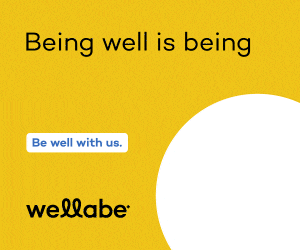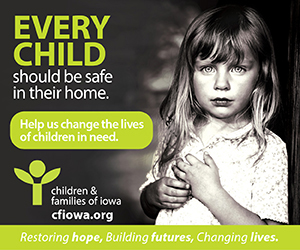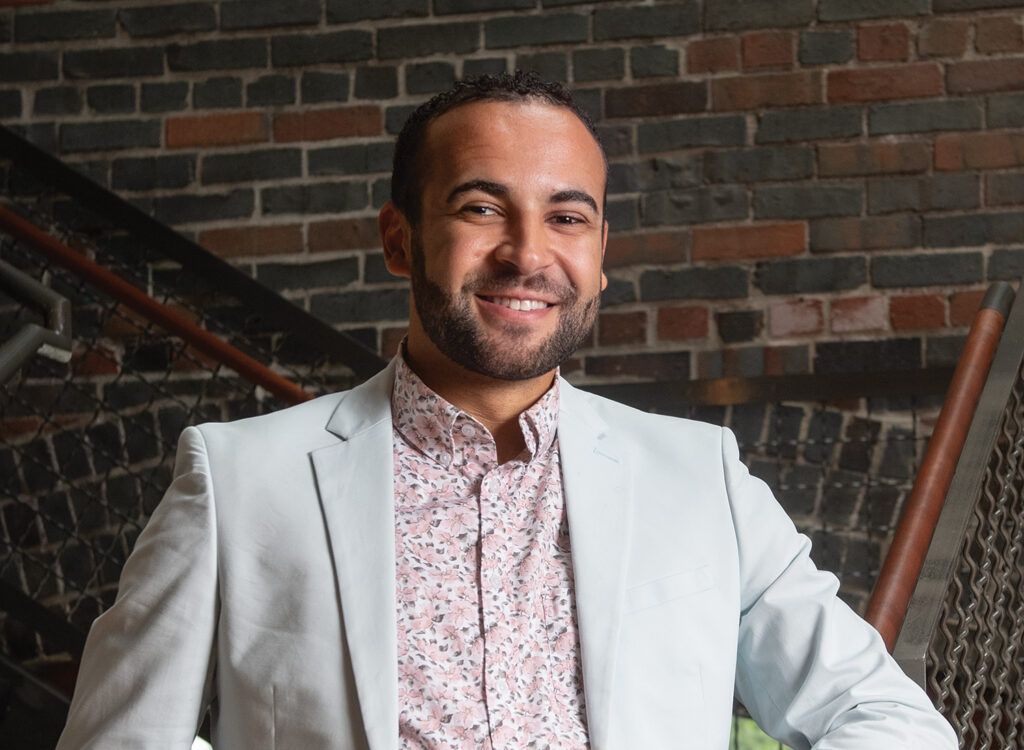Out – and authentic – in the workplace
One Iowa leaders: Serve transgender employees with a transition policy

KATE HAYDEN Feb 14, 2019 | 8:21 pm
9 min read time
2,062 wordsArts and Culture, Business Record InsiderFor transgender employees and the organizations that employ them, an information void exists.
In the 2018 Human Rights Campaign study “A Workplace Divided,” HRC reports that 46 percent of LGBTQ workers are closeted at work. Yet, attendees at the Women Lead Change Central Iowa conference in November learned that by 2025, 12 percent of the millennial workforce will identify as transgender or gender-nonconforming — and Iowa businesses will need to be prepared to serve that workforce.
One Iowa is stepping in to fill the void. The nonprofit was founded in 2005 with the original mission to advocate for LGBTQ Iowans’ right to marry; when the Iowa Supreme Court made the decision in April 2009 on the side of marriage equality through the case Varnum v. Brien, One Iowa gradually shifted from defending marriage equality to comprehensive advocacy and education on inclusivity, health, legal rights and social/emotional support for LGBTQ Iowans.
“People thought once we got marriage across the country our work was done, which we knew it wasn’t,” said Daniel Hoffman-Zinnel, executive director at One Iowa. “This is just one area that shows that the work continues even today.”
One Iowa hosted its second year of the LGBTQ Workforce Culture Summit in Des Moines and Cedar Rapids last October, and launched a new location this year in Sioux City to serve the western half of the state. About 250 people attended all three summits, said Erica Barz, communications and grants coordinator at One Iowa.
The Business Record met with Hoffman-Zinnel and Barz to learn more about the LGBTQ Workplace Culture Summit, and what businesses should consider when creating a transition policy for the growing transgender and gender-nonconforming workforce.
Why did One Iowa launch the LGBTQ Workplace Culture Summit?
Hoffman-Zinnel: We spend most of our time at work, and if we’re not able to be our true, authentic selves and have the opportunity to live our best professional life at work, then we’re doing a disservice. … And we wanted to be part of the solution to help employers create those cultures and those environments where LGBTQ people can be their true, authentic self. Even today, half of the LGBTQ community is not completely out at work. Clearly, there’s still work to be done in that area. And then, I met with a lot of different businesses, and especially employee resource group leaders, and none of them really knew who each other [was]. So not only did we want to provide best practices to businesses, but we also wanted to create an opportunity for these companies to come together so that they can learn from each other, share best practices, network.
We’re starting with the big corporations who are very engaged and involved, but ideally we would like mid- to smaller-sized companies to come. Oftentimes, they don’t have the capacity or resources to do this work, even though they might be well-intentioned and want to do the right thing in this area. … This is something that sometimes takes years. It can’t happen overnight.
Barz: Nearly half of LGBTQ folks not feeling comfortable being out at work — that’s a statistic that hasn’t really changed in a decade. … So many things about the LGBTQ rights movement seemed like they moved so fast — this is not one of those.
Can you recap the 2018 summits in Des Moines, Cedar Rapids and Sioux City?
Hoffman-Zinnel: We kicked off here in Des Moines at Corteva Agriscience. I think we had double the attendance in both Des Moines and Cedar Rapids, which was really exciting to see, compared to last year, [which was] both Des Moines and Cedar Rapids’ inaugural year.
This may seem minute, but some of the successes from this summit — Corteva had never flown a pride flag, and for that day they flew a pride flag for the first time ever, which is pretty amazing. … They also had their chief technology officer do the welcome with me, and he specifically talked about how, because of us hosting there, they are now looking at how to make the restrooms more inclusive, and any new buildout is going to always include a gender-neutral option, which is pretty amazing.
Barz: We also had [a summit] in Sioux City for the first time this year, which was definitely smaller in scope.
Hoffman-Zinnel: At least 27 [attended], so that was good. I think something that’s needed across the board and in Iowa, but I think something that people in Sioux City are kind of hungry for.
Let’s talk about some of these workplace policies you’re introducing. How many businesses that you work with have an existing transition policy?
Hoffman-Zinnel: I think policies in general are something that companies are very much interested in reviewing and updating. For transition policies, we get calls from time to time from companies who don’t have a policy but have an individual who is transitioning on the job come to them and say, “Hey, I’m transitioning, what are you going to do to support me as I transition on the job?” We encourage employers to be proactive in updating policies, or at least including a transition policy, because it’s easier for you to look at your policy and exactly know how would you respond to an employee who comes to you [and says], “I’m going to transition on the job. What are you going to do to support me? How are we going to maneuver this?”
How familiar are companies with this policy or idea?
Hoffman-Zinnel: Not at all. … I just trained the city of Ames employees. This was my seventh session with their employees. I started with leadership and managers, and they rolled it out to the rest of their employees. Whenever we do a training that’s talking about creating inclusive environments for LGBTQ people, it’s on our slide of things for them to be thinking about the future.
The big corporations, they have access to resources and expertise, so they have the ability to do that on their own. It’s usually the mid- to smaller [businesses] that don’t have the capacity or resources that we provide support to. SHRM [Society for Human Resources Management] has some great resources, too, like sample policies that some HR professionals have looked at as they’re drafting.
How do you help a company assemble a transition policy?
Hoffman-Zinnel: The biggest thing I think that should be written in policies really is to take the lead of the employee and what they are comfortable with. Some individuals want to be the person to communicate it through email, and others would like the CEO or their manager to communicate it [to the employee’s team]. So I think a really important component to the policy needs to be … making sure that you’re following the lead of the employees themselves, and making sure they’re comfortable with each step along the way.
Dwolla [gives] the option to allow the employee to be gone the day that the communication goes out if they would like, just so they didn’t have to be there and see employees [react]. That, I think, is a great option. We have sample policies, but it really depends on what the company is really looking for, and I think oftentimes they adapt the policy to the specific [employee].
At what stage in the transition process do employees tell their companies about it?
Hoffman-Zinnel: It depends on the person. Some individuals could be living out outside of work for a while and finally want to come out at work. Others potentially may just want to come out to their HR person, so that they can maybe get access to benefits, health insurance benefits specifically, but don’t necessarily want to be out to the entire company. I think the biggest thing for companies to know is this is really a case-by-case scenario, planning for trans individuals navigating that individually with each person.
It can be challenging, because you can’t do a one-size-fits-all for every person, unfortunately, but there are parameters you can put in place to allow the company, or the manager, to kind of walk through to best support that person as they’re navigating.
What are the kinds of things transgender individuals are asking of their company?
Hoffman-Zinnel: First off, I think just emotional support, just being able to be themselves at work and not have to worry about what people are going to say to them or do. I think it’s just really creating that culture where people can be their true authentic self at work. When we have that happen, people are more productive, they have greater job satisfaction, they’re going to stay in their job longer.
In addition to that, I think health insurance benefits are a huge component, looking at what your coverage includes. Does it include gender-affirming surgery? Does it include hormone-replacement therapy? Those are things that some transgender individuals — not all, but some — want access to. It’s, I think, something that all employers should be looking at in addition to having a transition policy is their health insurance benefits.
Barz: Names are a big thing. Depending on the size or what the company does, is this person still using their legal name? Are they using a different name, and changing [their] email address, company ID, company records in general to reflect [that] and navigating any potential security hang-ups that you have come up? … Being able to navigate that well while also still being able to respect this person’s identity.
Is this kind of policy strictly beneficial to transgender individuals, or could it benefit individuals coming out about their sexuality?
Hoffman-Zinnel: I think it could, yeah. … There could be some crossover with just the coming out part of it, how you navigate that, but some people don’t want to be out at work, either. And some only want to be out to a select few people, whoever they’re comfortable with.
Barz: There could be some crossover with making sure people are aware of their rights, what Iowa’s civil rights law says. Now that we have [state marriage rights], I’m thinking logistical things. For trans folks there’s health insurance, name changes — and those things … don’t necessarily apply to someone who is lesbian, bisexual or gay.
So the spirit of a transition policy would be helping someone through the logistics and paperwork?
Hoffman-Zinnel: Correct, which can be complex, for sure, for some individuals and some companies, depending on the type of company.
Are there any missteps well-meaning companies could take?
Hoffman-Zinnel: Tokenism is something that in general happens a lot with marginalized communities. When you have one person that comes out, you kind of tokenize them and use that as kind of a leverage, showing that you are inclusive. I would encourage companies to not tokenize any marginalized employee. … You’ll see imagery of that person front-and-center to show, “Hey, we’re inclusive.” Just be cautious of how you’re communicating to the broader community on the things that you’re doing to address diversity, equity, inclusion. Specifically within the LGBT community … that’s something that comes up quite a bit.
We’ve been doing a lot more with companies and in the workplace. Many of them are bringing us in for training, some are bringing us in for policy development and review, and all of those go hand in hand. If you are interested in doing this, you need to not only do the policy change, but also do the training, because it just takes time. Like we see in the general public, culture takes time to catch up with policy, so if you’re instituting these policies but not communicating it to employees, that’s something that could potentially backfire. It’s best to provide some training along the way, and that’s one thing we do a lot of.
[At] the Polk County Jail, we trained all of their staff, we helped work with them to update one of their policies, specifically on how to best serve transgender individuals that are coming through their system, and then we came back to train their employees on that policy. That was a good partnership, a progression of how things could work.
Barz: Even if your policy is written perfectly, if you don’t have buy-in from employees on all levels, then it can still be a hostile work environment for that person.









